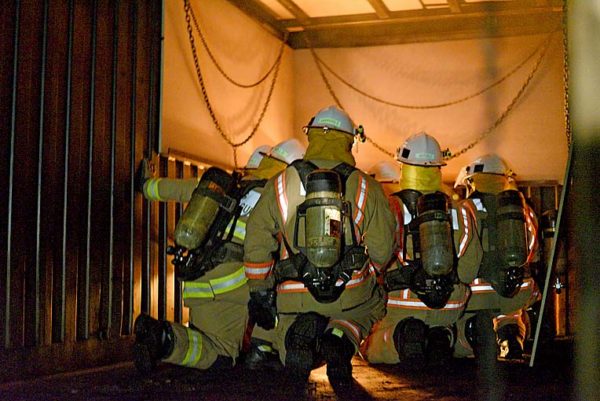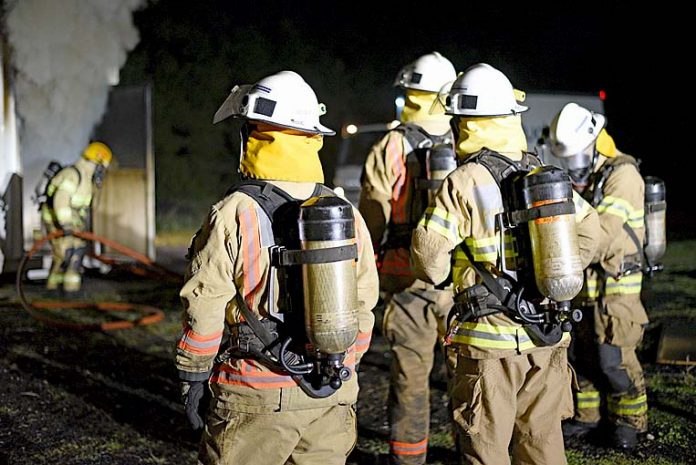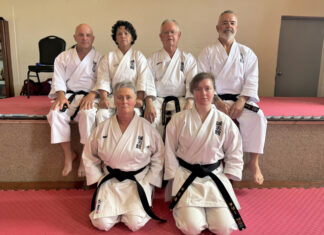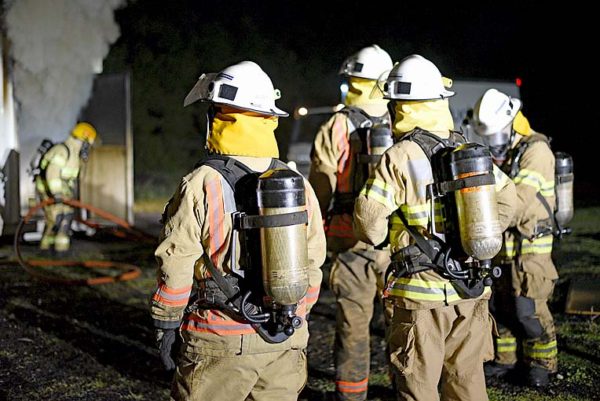
THE city’s retained firefighters learnt improved methods to control conditions when battling structural fires during an intensive training program this week.
Mount Gambier’s old recycling depot on Eucalypt Drive was transformed into a makeshift training facility, with a demonstration burn inside two adjoined 20-foot shipping containers replicating a structural fire.
Firefighters watched the fire develop inside the containers and trained in the application of water to maintain safest possible conditions.
Previously only available to firefighters in metropolitan Adelaide, Limestone Coast Metropolitan Fire Service regional commander Mark Searcy said the training would now be delivered to departments in regional centres across the state.
“We are truly grateful to Mount Gambier City Council for allowing us to use the recycling site to deliver this training,” Mr Searcy said.
“It’s the ideal open space for this type of demonstration and this training is vital for our retained firefighting crews.
“They are learning new, more effective techniques to control structural fires – until recently this training wasn’t available to regional firefighters.”
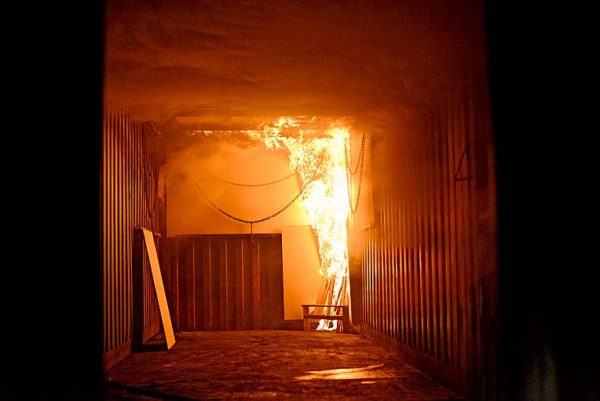
MFS regional training coordinator Darren Grosser said the roll out of the training had already proven valuable in other regional centres.
“A few weeks ago there was a structural fire at Encounter Bay and retained firefighters from Victor Harbour attended,” Mr Grosser said.
“The station officer said he felt really confident sending his team in there after the recent training, the crew made really good decisions and the information from the crew inside was fantastic.
“They used these new skills and were really effective and saved the house – it was a two-storey home and the fire was on the upper level with exposure either side, it could have been really nasty but he was really pleased with the outcome.”
Mr Grosser said the simulation inside the two shipping containers provided unique insight into structural fires.
“For many of the firefighters here tonight this was their first chance to see a fire develop,” he said.
“Usually we rock up five to 10 minutes after the fire has started – this is a chance for firies to see how the application of water changes the conditions inside.
“We deliver the training to eight firefighters at a time, with two hours of theory work before the demonstration.”
